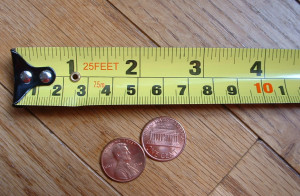The King of Energy Guarantees
If you don’t know who Richard Rue of Energy Wise Structures is, you should. He has written aggressive energy useage guarantees that are metered on over 40,000 new structures in the US. How aggressive? Often 75% less energy usage than comparably built new homes not built to Energy Wise specifications.
His system is quite accurate. Because he is accountable for the energy guarantees, he needs to measure to see if those guarantees are possible. Only eight have exceeded his performance projections and according to Richard all eight were related to the heating and cooling systems not performing to specifications.
Yes, that’s pretty impressive.
Richard sees a substantial problem, though. Despite knowing how to engineer homes that are wildly efficient and actually cost less to own, nothing in the new build market has changed in 15 years.
Richard and I are friends, and we frequently discuss things in the LinkedIn forums. The forums are members only, but this exchange was so shocking to me that I asked if I could share it:
RESNET/BPI Linked In Group 2-24-15
Richard Rue Owner, EnergyWise Structures-Mechanical and Industrial Engineering Consultant
Nate, let me share a story with you that happened to my brother Randy and I in 2002. We were driving back to Texas from Maryland and we decided to make a detour to Tennessee to see our colleague Dr. Busby. Right outside of Nashville we received a call from Sam Raskin and Blane Collison from EnergyStar. The first thing Blane said was that they have been monitoring the total utilities on five houses in Chicago to try and figure out how accurate their Hers Ratings were. He said that all five houses were newly constructed and between 5500 ft.² to 6000 ft.² and that they all were rated at around an 85. Blane said that one of the five houses was an EnergyWise engineered house. We were then informed that after they pulled the first years total utilities that all of the houses were averaging between 500 to $600 per month except for one. He then told us that the EnergyWise house was averaging $125 per month for the year. That was one of the first times we had talks with them about why prescriptive programs do not work. Here it is in 2015 and things are not much better.
Measurement Is Needed
Currently, you can get a house certified by any of a number of organizations. Energy Star, HERS, LEED for Homes, NAHB, Passive House, Living Building Challenge, and plenty more. (Sorry for the alphabet soup, click the links to learn more.)
Want to know what all of those programs, to the best of my knowledge, are missing? After the fact measurement. They have no accountability for their projections. It’s like saying a car gets 100 miles per gallon but never checking. It may only get 30. We’ll never know. The poor consumer is paying the bill, so who cares?
LEED Buildings Use More Energy
Think this is just a residential problem? Let’s look at a really good example of lack of measurement in the commercial sector.LEED stands for Leadership in Energy and Environmental Design. You would guess that buildings built to this standard would use less energy than a comparable building not built to LEED standards. You would be incorrect. Anastasia Swearingen wrote this in USA Today 3/7/14:
“Why aren’t LEED buildings more energy efficient? Because the USGBC doesn’t actually require them to be. To achieve certification under the existing LEED standards, buildings just have to show the USGBC that based on a computer modeling of energy and water usage data, the buildings meet USGBC standards. How buildings fare once they’re actually occupied and used doesn’t factor into whether they can display a shiny “LEED Certified” plaque next to their entrance.”
Swearingen goes on to explain that Washington D.C. mandates that all new buildings be built to LEED standards, yet they use 44% more energy than the national median.
It’s Time to Get Serious
What’s the common thread? No measurement from actual utility bills. No accountability for results. If we are going to get serious about being good stewards and leaving a good place to live for our kids, grandkids, and ancestors, it’s time to get serious. Let’s measure.
We Now Have the Tools
Until recently, we didn’t have the full suite of tools available to us to easily measure energy usage reductions over large data sets. Thanks to smart meters and better software, we now have what we need.
Energy Usage Is Predictable
Richard Rue and EnergyWise have proven that energy usage is predictable in new homes. Our sister company, Energy Smart Home Performance, has found that it is predictable for existing homes as well.
In fact, it is this experience that has led us to believe that a new way is possible, and One Knob was born. The three principles of One Knob, by the way, are Results Focus, Accountability, and Market Transformation. In our minds, no program today lives up to these principles.
Meanwhile Richard Rue has quietly been achieving these principles from his offices in Texas. The big difference? He measures.
Let’s Tell a Different Story in 15 Years
I don’t want to tell my daughter down the road that I did anything less than my very best to leave a healthy and vivacious planet for her to raise her kids on. How about you? Let’s not be telling Richard’s story in another 15 years. Let’s be intentional about focusing on results, showing true accountability, and transforming markets.
Here at One Knob Consulting, we have the keys to make all of this happen. Let’s measure!
Image Credit: Wikipedia
